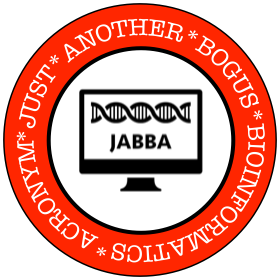Bad bioinformatics software names revisited
I recently have been sorting through lots of old notes files, including many from my time as a genomics researcher at UC Davis. One note file I had was called ‘Strategies for naming bioinformatics software’ and I initially assumed it was one of the blog posts posted on this blog.
However, I couldn’t find it as an actual post and when I did a quick web search, I instead discovered this ‘Bioinformatics lab’ podcast from earlier this year:
I have been out of the field of genomics/bioinformatics for many years now and didn’t know about The Bioinformatics Lab podcast which describes itself as ‘ramblings on all things bioinformatics’.
The conversation between the hosts (Kevin Libuit and Andrew Page) is good and listening to it brought back lots of memories from the many things I’ve written about on this blog. At the end of the episode, Andrew concludes:
“It’s kind of hard. People should bit a bit of effort into it”
100% this! Naming software should definitely not be an afterthought. Andrew goes on:
“Before you do any development on anything, go and choose a really good name and make sure it doesn’t conflict with any trademarks or existing tools, you can Google it easily and it’s not offensive in any language.”
These are the types of things that I have written about extensively on this blog. If you are interested, perhaps start with
Then you can ready any one of the nearly forty posts I wrote which handed out ‘JABBA awards’ which stands for Just Another Bogus Bioinformatics Acronym.
This award series started all the way back in 2013 and the inaugural award went to a tool with the crazy capitalisation of 'BeAtMuSiC'.
There’s also a series of posts on duplicate names in bioinformatics where people haven’t checked whether their software name is stepping on someone else’s toes.
This includes a post about the audacious attempt to name a new piece of bioinformatics software BLAST. There is also a post about the five different tools that are all called ‘SNAP’.
Admittedly I’ve been out of the loop for so long there is the possibility of there being many more SNAPs out there now!
The moral of this blog post is that names are important and it is very easy to mess them up which could end up meaning that fewer people ever discover your tool in teh first place.






